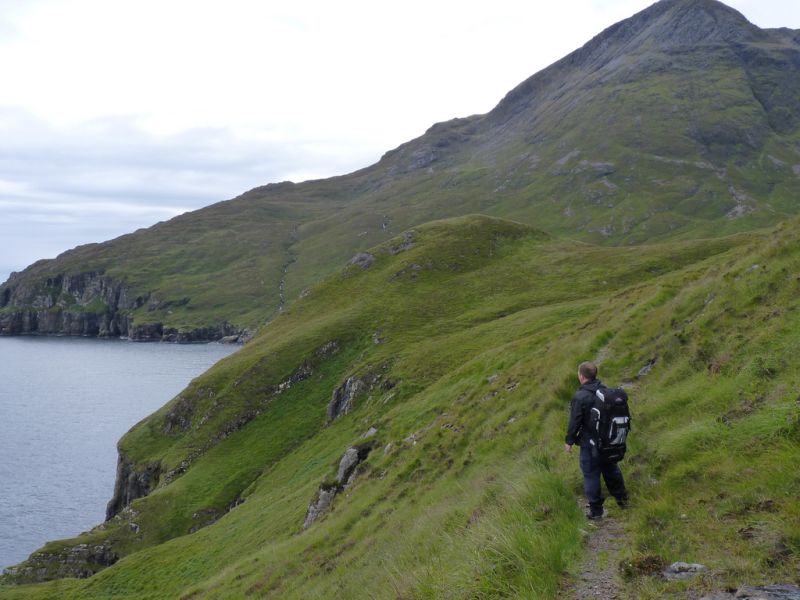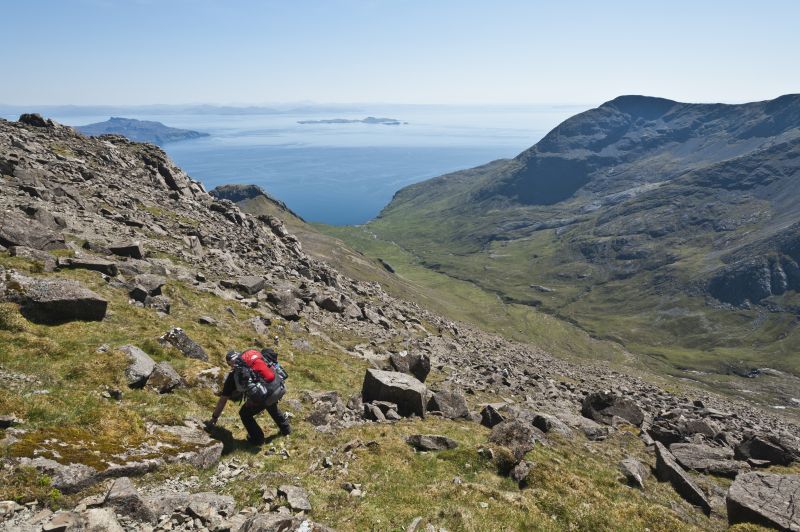The isle of Rum is a National Nature Reserve and a Site of Special Scientific Interest (SSSI). There are no roads on the island and reaching it involves a boat trip, adding to the feeling of an adventure. The jewel of the island (for walkers and climbers anyway) is the Rum Cuillin which, like its counterpart, the Black Cuillin on the Isle of Skye, offers excellent scrambling along narrow ridges to mountain summits jutting above the Sea of the Hebrides, with great views out to the Atlantic Ocean.
The highlights of my visits to Rum have been hillwalking and backpacking trips on Ainshval and Askival, two of Rum’s Corbetts. Although only about 2,500ft high, the view from both peaks is spectacular – a 360-degree view taking in Skye, Eigg, Muick, Canna, the Hebrides and much of Scotland’s mainland west coast. On one occasion, on a sweltering bank holiday weekend in May, we bivvied on Ainshval’s summit during an epic three-day expedition where we climbed all Rum’s hills, soaking in the heat and the views as the sun set as a fiery orange ball on the horizon.

Photo: Damian Entwistle
On another trip, pouring rain caused us to bail on a traverse of the Cuillin ridge into the Atlantic Corrie, a gigantic, amazing amphitheatre filled with seemingly no less giant stags that stood their ground and defiantly roared at us as we interrupted their rutting season.
Fortunately, my ratio of good days on the island outweighs the bad days. This includes the day we descended from Askival (pictured), after a brilliant summer day’s hillwalking, which culminated in an engaging night making new friends at Dibidil bothy on the shoreline.
Getting there and around
Caledonian MacBrayne and Arisaig Marine ferries offer easiest access to the island. For venturing thereon in, you’ll need to don your walking shoes. If heading anywhere remote, take standard hillwalking gear (warm clothes, waterproofs and gloves) and be experienced in the use of a map and a compass.
Places to stay
The ‘capital’ of Rum, Kinloch, has an organised campsite plus cabins for hire. The Isle of Rum Community Trust operates a bunkhouse. Wild camping is an option all over the island (as long as you follow the Scottish Outdoor Access Code). Alternatively, go basic and stay at one (or both) of the island’s mountain bothies – Dibidil bothy and Guirdil bothy. Read more about your options on the island’s great website at www.isleofrum.com.



